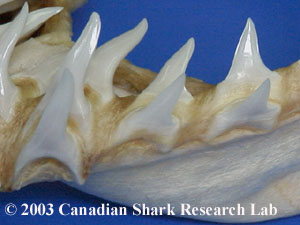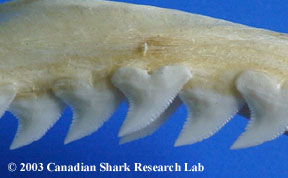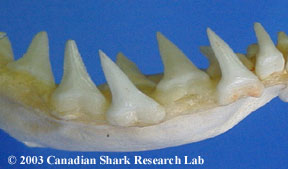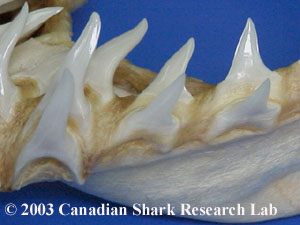Teeth
Shark teeth are not lodged permanently within the jaw, but are attached to a membrane known as a tooth bed. The tooth bed membrane is similar to a conveyor belt, moving the rows of teeth forward as the shark grows, thus replacing the older teeth in front that have become damaged, fallen out or worn down. It is not uncommon for shark teeth to be found lodged in large prey (such as whale carcasses) or loose on the ocean floor.
The shape, number and appearance of shark teeth varies considerably among shark species, and can be one of the most important features for species identification. However, tooth appearance can also differ between the upper and lower jaw, and from front to back, within any given shark.
The blue shark is a good example of how teeth can differ between the upper and lower jaws. The upper teeth (top) are triangular and curved with serrated edges and overlapping bases. The lower teeth (bottom) are more straight and slender with finely serrated edges.
The teeth of the porbeagle and mako are alike in both the upper and lower jaws. The porbeagle (left) has smooth edged teeth with lateral denticles while the mako (right) has more slender teeth without lateral denticles.




